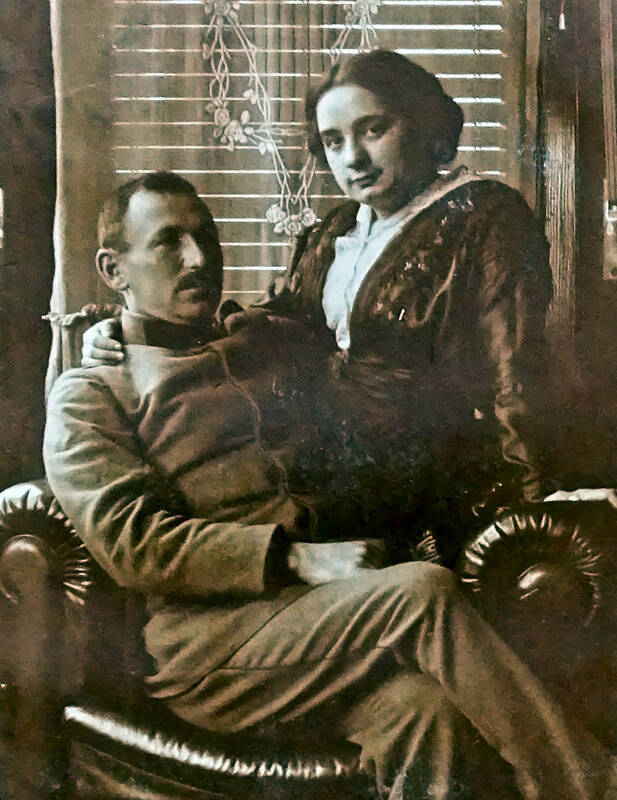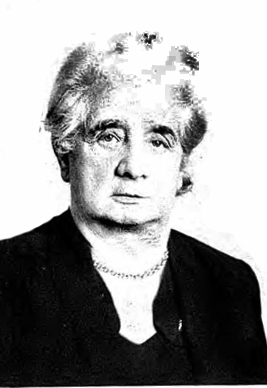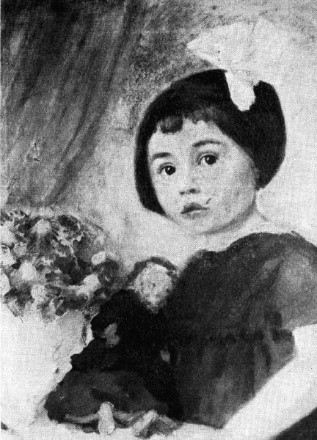Henriette Bamberger, née Wolff
Author: Manfred Brösamle-Lambrecht

Background and marriage

Henriette Bamberger's parents were the merchant Beni [Benni] Wolff (1857-1923) and his wife Therese Wolff née Reiß [Reis]. Henriette's mother and several siblings managed to emigrate to the USA and Brazil, respectively.
The 22-year-old Henriette, called "Jetta," answered Otto Bamberger's marriage advertisement in 1913, and the wedding took place on December 13, 1913. Jetta was a congenial, equal partner to the unconventional, culturally highly interested and strong-willed Otto. Their son Klaus later told of a droll marital war when Jetta cooked spinach for lunch, which Otto detested. When he refused to eat the vegetable, she served it again every day – one must eat what is on the table. Otto countered by no longer coming home for lunch, but eating at his parents' house. Only after several days did Jetta capitulate.
She was the first woman in Lichtenfels who could drive a car. In her green convertible Mercedes Benz 170, she was a familiar sight in Lichtenfels
Her determined fight against the arbitrary arrest and harassment of her husband in 1933 showed her courage and assertiveness.
New role from 1933

When the two children were safe abroad, she decided to take a greater interest in the family business and became involved in its management.
Photo: Jetta Bamberger and her green Mercedes convertible
"A knock at midnight" - escape and new existence in the USA
At the end of October 1938, Henriette Bamberger was secretly visited around midnight by Wilhelm Aumer, the head of the passport department in the Lichtenfels district office (Landratsamt), and warned that he had received instructions to confiscate passports from Jews. He strongly advised Jetta to leave the country as soon as possible, since even worse measures against Jews were to be expected.
The very next morning she left Lichtenfels for good: she went to her mother in Stuttgart and applied for a visa to the U.S. at the U.S. consulate, ostensibly to visit her son there, which was granted.
Largely penniless, she struggled through the first few years in several jobs as a housekeeper, educator and even chauffeur in Cleveland before moving to New York to join her son, who was able to support his mother by taking a job with his uncle and later running his own business. She spent her retirement in an upper Manhattan neighborhood dominated by German émigrés before moving to join her daughter Ruth in Louisville, Kentucky, in 1976 at the age of 84. She died there in 1978 at the age of 86.
She remained an extensively interested, independent, and active woman until her end.



Daughter Ruth Bamberger

Daughter Ruth Bamberger, later married Löwenfeld, received an excellent school education, among others, in the reform-pedagogical boarding school "Freie Schulgemeinde" in Wickersdorf near Saalfeld and the likewise reform-pedagogically oriented "Schule am Meer" on the Island of Juist in the North Sea.
After her high school exit exam, she attended the Jewish Seminary for Kindergarten and After-School Teachers in Berlin, from which she graduated successfully in 1936.
After a period as an au pair with one of the duPont families in London, she obtained an entry visa to the USA from Paris, which she took up in November 1938. Initially she lived with the family of her uncle Anton Bamberger in New York until she took over the management of the newly founded Jewish Kindergarten in Louisville, Kentucky. She specialized in the education and care of mentally handicapped children and became a recognized authority in this field.
Photo: Ruth Bamberger, painting from Max Obermayer, 1918
